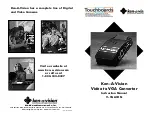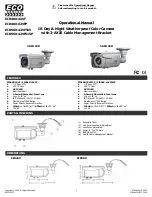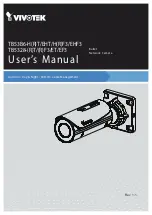
115
Chapter 7:
Tips
7.1
Counter the Effects of Aging
EM gain can degrade over time, especially when large gain is used under high light level
conditions. The ProEM utilizes many anti-aging measures, including clock-voltage
optimization. Deep cooling allows the camera's high-voltage clocks to be operated well
below their maximum rating while still achieving greater than 1000x EM gain.
Despite the anti-aging measure built into the ProEM, some general precautions are
helpful in further countering the effect of aging:
•
Use the minimum required EM gain for a given light level. For example, only
~50x -100x gain is needed to achieve <1 e
-
RMS read noise. Once <1 e
-
RMS
effective read noise is achieved, there will be no further improvement in
signal-to-noise ratio for most applications.
•
Turn down the EM gain to 1x when used with bright light sources.
•
Use maximum gain only when there is a need to amplify single-photon events
above the background for the purpose of thresholding.
7.2
Maximize Throughput by Choosing the Right Vacuum Window
Coating
To maximize light throughput, the ProEM uses a highly advanced single-window
vacuum design. This means the vacuum window is the only optical surface
encountered by incident photons before they reach the EMCCD detection surface.
Although the design is the best available, each uncoated optical surface of the vacuum
window can still have 3.5% to 4% transmission loss, or a total loss of 7% to 8%. For
light-starved imaging applications, this loss can result in a significant reduction of
signal-to-noise ratio. Moreover, any light reflected inside the system can lead to glare
and fringing, especially when used with coherent illumination. The solution is to apply
anti-reflective coatings on the window in the optical path, which reduces total losses to
below 1% and sometimes even to 0.5%.
All Teledyne Princeton Instruments cameras, including the ProEM, are designed with a
single window made of high-grade fused silica/quartz that acts as a vacuum view port.
Any shipping-protection windows on the EMCCD are removed prior to installing it in
the vacuum chamber. The vacuum window can be customized with single- or
multi-layer AR coatings to match the wavelength of interest. Customers should note
that AR coatings typically provide the best performance when they are tuned for a
narrow wavelength range. Since they may have poorer transmission outside their
optimum wavelength range, care must be taken before choosing an AR coating.
Teledyne Princeton Instruments representatives can help you select the most
appropriate AR coating for your application needs.
See
.
Summary of Contents for ProEM Series
Page 1: ...www princetoninstruments com ProEM System Manual 4411 0126 Issue 3 September 26 2019 ...
Page 10: ...10 ProEM System Manual Issue 3 This page is intentionally blank ...
Page 16: ...16 ProEM System Manual Issue 3 This page is intentionally blank ...
Page 30: ...30 ProEM System Manual Issue 3 This page is intentionally blank ...
Page 50: ...50 ProEM System Manual Issue 3 This page is intentionally blank ...
Page 88: ...88 ProEM System Manual Issue 3 This page is intentionally blank ...
Page 114: ...114 ProEM System Manual Issue 3 This page is intentionally blank ...
Page 122: ...122 ProEM System Manual Issue 3 Figure 7 8 LightField Settings 4411 0126_0078 ...
Page 136: ...136 ProEM System Manual Issue 3 This page is intentionally blank ...
Page 146: ...146 ProEM System Manual Issue 3 This page is intentionally blank ...
Page 152: ...152 ProEM System Manual Issue 3 This page is intentionally blank ...
Page 161: ...This page is intentionally blank ...
















































